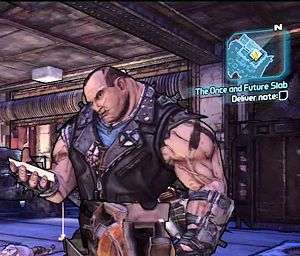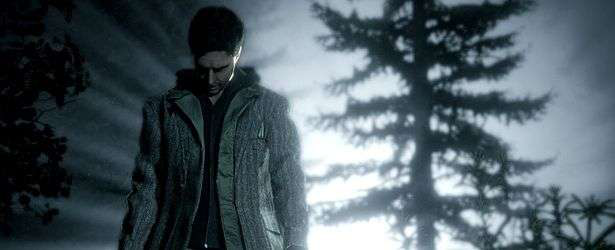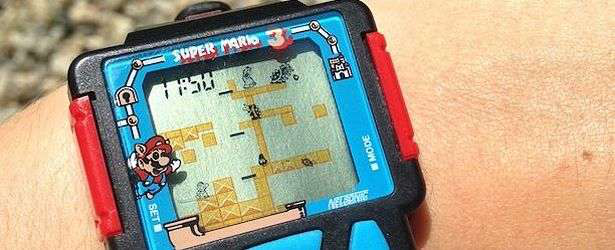Why Borderlands is Better Than Borderlands 2
by Mark R
 When I first decided to write this article, I had a very clear vision in my head. I absolutely love playing through Borderlands but, for some reason, there’s nowhere near the same pull to replay Borderlands 2, despite my love for Handsome Jack and all of the dark humour he brings to the table. Then, the more I started to think about it, the more conflicted I became. I’d remember certain aspects and then suddenly it’d come to me – “Oh, that’s actually in Borderlands 2“, and so began the inner struggle to decide which was the better game and, more importantly, for what reasons. One may be better than the other in terms of tech, progress, humour, and variety, but does it necessarily make it the better game? Forgive me, but all my notes have since been discarded and I am, instead, cataloguing a stream of consciousness – there will be spoilers.
When I first decided to write this article, I had a very clear vision in my head. I absolutely love playing through Borderlands but, for some reason, there’s nowhere near the same pull to replay Borderlands 2, despite my love for Handsome Jack and all of the dark humour he brings to the table. Then, the more I started to think about it, the more conflicted I became. I’d remember certain aspects and then suddenly it’d come to me – “Oh, that’s actually in Borderlands 2“, and so began the inner struggle to decide which was the better game and, more importantly, for what reasons. One may be better than the other in terms of tech, progress, humour, and variety, but does it necessarily make it the better game? Forgive me, but all my notes have since been discarded and I am, instead, cataloguing a stream of consciousness – there will be spoilers.
When I go back to play through Borderlands 2, there’s a very urgent desire to get to the stage where Sanctuary evolves, yet I don’t know why. It could be that the vendors all end up with better gear once you reach that point, or it could simply be the romance behind the idea of a floating city; a safe haven from the world’s ills, protected by a grease-covered guy who has a crush on his mother and most likely slept with his sister. Everything leading up to that point has a very mediocre sense to it, and dawdles along at a pretty uninspiring pace. The areas themselves are quite bland, and the enemies, other than the bullymongs, are primarily the same bandits you dealt with in the first game.
The start of Borderlands, however, is frenetic. You leave Markus’ bus and before you even reach Fyrestone, you’ve got some lunatic Mad Max-style guys flying over your head in their cobbled-together vehicle, screaming as they blast you with shotguns and whatever else they have to hand. Immediately, you know that you’re going to have to think fast, and react even quicker if you’re to stay alive. Then you’re introduced to a quaint little village where everyone apart from the local doctor (note: not a real doctor) has fled to avoid the chaos and carnage. It’s melancholy, to say the least, and sets the tone nicely so that you immediately understand that there’s a world full of people who just want to get back to their day-to-day life and who need a champion to make that happen for them. Before you’ve even started, you know that you’re here to make a difference, and that feeling continues throughout the game.
 Borderlands 2 may have a greater variation in terms of locations and locale aesthetics, and they’re certainly more inhabited and lived-in than those in Borderlands, but there’s a certain level of apathy that comes with that. Almost as though people are actually getting on with their lives anyway, so you don’t really need to intervene if you don’t want to. Sure, they may not be entirely happy, but they’re still getting their heads down, doing what needs to be done, with only a few mumbles of complaint here and there if you even bother to listen to their quiet ramblings.
Borderlands 2 may have a greater variation in terms of locations and locale aesthetics, and they’re certainly more inhabited and lived-in than those in Borderlands, but there’s a certain level of apathy that comes with that. Almost as though people are actually getting on with their lives anyway, so you don’t really need to intervene if you don’t want to. Sure, they may not be entirely happy, but they’re still getting their heads down, doing what needs to be done, with only a few mumbles of complaint here and there if you even bother to listen to their quiet ramblings.
It’s exactly the opposite with Borderlands – everything is very dry, arid, and decimated. There’s literally no cultural development going on, and the only settlements are either being ravaged by bandits or have already been turned into strongholds. While it should be the case that Borderlands 2 wins out because of the colour, the textures, and even the addition of a lived-in environment, it doesn’t actually serve to drive the player (or me, specifically) into wanting to help out. You know that they could easily survive without you, so really you’re just riding along on their coat tails or capitalising on what they have already started to do themselves. In Borderlands, they need you, and without your intervention, their society won’t prevail, but they don’t know this yet.
Where Borderlands 2 does take the lead is with Sanctuary itself. The closest we really got to a bustling township in Borderlands was New Haven, with its twenty or so inhabitants, but it was devoid of any real atmosphere or sense of community. At best, it was a bunch of people living separate lives within one area, but keeping to themselves rather than enjoying any real interaction with others. It didn’t really sit well with me, as people in that situation would seek out the closeness of others to know that someone else had their back. With Sanctuary, on the other hand, you’d see NPCs talking to each other, folk would hang out at Moxxi’s bar and have a drink together, and there was always something going on. It made you want this place to succeed, and to overcome everything that was stacked against them.
Progression through Borderlands 2 was mostly achieved by tearing through the Hyperion Corporation’s plethora of mechs, and this was a relatively simple affair provided you had corrosive weaponry at your disposal. Even outwith the mech-peppered areas, the corrosive weapons did a great deal of damage to almost all of the enemies that the game could think to throw at you, so it was a no brainer when it came to considering your loadout – a couple of heavy weapons with corrosive damage and a couple of backups for carbon-based lifeforms.
With Borderlands, however, you had to put a lot more consideration into your loadout. In any one area, you could come across folk who had immunity to certain types of elemental damage and who weren’t susceptible to regular ammunition, so you had to think fast and switch weapons to suit. The Crimson Lancers, for example, could have an entire squad with shock troopers, pyro troopers, and chemical troopers, so unless you came prepared with an elemental type to combat each of their own resistances, and had enough ammo to do so, you were well and truly screwed.
 If you were a solo player, Borderlands 2 was made considerably easier by the help you’d often get from the AI characters from the first game. It may have been interesting to see them in action as themselves, rather than as a player-controlled character, but when they did a lot of the leg work for you it became tedious to have to stand by and watch them do what you could have been doing. In Borderlands, you were on your own. There was no AI to tag along and run ahead when things got rough, and at no point were you expected to stand by the wayside while someone else put in all the effort. It was a struggle; a real struggle. You were the one trying to shape a better world for everyone, while serving your own needs, rather than with the sequel where you were simply along for the ride while they carried on their role of champion.
If you were a solo player, Borderlands 2 was made considerably easier by the help you’d often get from the AI characters from the first game. It may have been interesting to see them in action as themselves, rather than as a player-controlled character, but when they did a lot of the leg work for you it became tedious to have to stand by and watch them do what you could have been doing. In Borderlands, you were on your own. There was no AI to tag along and run ahead when things got rough, and at no point were you expected to stand by the wayside while someone else put in all the effort. It was a struggle; a real struggle. You were the one trying to shape a better world for everyone, while serving your own needs, rather than with the sequel where you were simply along for the ride while they carried on their role of champion.
Your character in Borderlands 2 was basically a mercenary for hire, being used to take down Handsome Jack and prevent him from getting hold of the vault key so that he couldn’t unleash hell on Pandora. You did whatever was required of you in order to make that happen, and did the bidding of the original Vault Hunters whenever you were called upon. It was never about you, but more about Jack and the Hyperion Corporation. We’ve had that story in countless video games, and it gets tiresome after a while. It’s tough to care much when you’re just a gun for hire, out to get ‘the man‘ and give back to the people. It’s been done; it’s not necessarily a poor storyline, but there’s nothing inspired about it.
Borderlands was different, though. Everything was about you – your greed, your desire for trinkets, your quest for something that nobody else had. You weren’t a mercenary; you weren’t working for someone else in order to take down the ‘big bad‘; it was you on a quest to get as much treasure as you possibly could. Sure, you ended up being a pawn in someone else’s game, but you didn’t know that until the end. Your drive was nothing more than an in-built desire for more. More weapons, more cash, more trinkets, and whatever the hell was inside that vault. In Borderlands, you were the anti-hero whereas in Borderlands 2 you were playing the tried-and-tested typical hero.
 Then we have the characterisation. I’m sure we all had our own idea about what each of the original characters were really like, based on how they performed when you were playing them. I always thought Lilith was full of sass, Mordecai had a devil-may-care attitude but was still permanently primed, Brick didn’t say much at all and mainly spoke with his fists, and Roland was an all-out tactician. My interpretations were based on how they reacted within the game, and not some fly-by-night fantasy that I made up in my head. Then, all of a sudden, the sequel came out and we had a raging alcoholic where Mordecai once was, a wise-cracking jock in place of the hard-assed tank they called Brick, a pretty bland run-of-the-mill soldier for Roland, and some odd flighty valley girl as Lilith.
Then we have the characterisation. I’m sure we all had our own idea about what each of the original characters were really like, based on how they performed when you were playing them. I always thought Lilith was full of sass, Mordecai had a devil-may-care attitude but was still permanently primed, Brick didn’t say much at all and mainly spoke with his fists, and Roland was an all-out tactician. My interpretations were based on how they reacted within the game, and not some fly-by-night fantasy that I made up in my head. Then, all of a sudden, the sequel came out and we had a raging alcoholic where Mordecai once was, a wise-cracking jock in place of the hard-assed tank they called Brick, a pretty bland run-of-the-mill soldier for Roland, and some odd flighty valley girl as Lilith.
And what happened with Patricia Tannis? She was a ridiculously smart woman in Borderlands, and had an odd way about her where there was a high degree of antisocial behaviour with quite sadistic undertones, yet in Borderlands 2 she was a raving lunatic. I suppose it could be argued that her mental stability was affected by everything that went on, but it’s quite a leap to suggest that her past isolation and her encounter with Jack has turned her into quite an exaggerated Asperger’s sufferer in a short period of time, especially when she’s no longer in the same position as she once was. Her erratic behaviour is a far cry from the woman she once was, and she’s also been relegated to a mere quest giver rather than the brilliant scientific mind from our first trip to Pandora.
Then we have the changes in the mechanics, and this is where Borderlands 2 shines through. The ability to mark specific weapons as trash or favourites is something that really should have been there since the start, given that it’s a loot-based game where stats and gear progress are vital. Then there’s the new option to trade with other characters, either as a straight swap for another item, or selling them for cash… or even gifting them with no recompense. In a team-based game, this is a welcome boost to the group dynamic where it became possible to throw some cash at another player to help them buy that all-important named weapon from the vendor rather than having to sift through inventories to see which weapons could be sold.
The introduction of Badass Ranks meant that you could effectively progress your character beyond whatever level cap was currently implemented. While many went out of their way to complete specific in-game challenges to earn the Badass Tokens, it was very easy to pick them up along the way without putting any real effort into it, such as completing a set number of kills using a shotgun, an SMG, a pistol, or whatever. There was a certain degree of linearity to it, though, as selecting an advancement to your fire rate for two or three tokens in a row would mean that this particular trait wouldn’t pop up for a while until you’d balanced it out by spending on other things. So even though you were progressing your character the way you wanted to, they still controlled certain aspects so you couldn’t go overboard. Still a worthwhile change in mechanics, though.
In fact, there are many changes to the game mechanics in Borderlands 2 from which the first game could have benefited. The relics, for example, mean that you don’t just have class mods to determine how your character performs, and the variety therein makes for a much-improved experience. They also made it considerably tougher in Borderlands 2, in terms of balance, where you had to constantly re-stock your loadout going forward. As you progressed through the levels, the enemies would become a lot more difficult to kill unless you switched out your current weapon set for a more powerful arsenal. In Borderlands, however, I was able to use a level 17 Cold Thanatos machine pistol up until the end-game and still unleashed enough damage that it was my primary weapon. While some may enjoy that, I felt it was a little unrealistic to go from level 18 to level 69 using the same weapon and still manage to do as much damage.
 Speaking of end-games, there’s no denying that the end of Borderlands was more of an anti-climax than a climax. It was an easy defeat, and The Destroyer put up practically no fight; it was a case of switching to an SMG or machine pistol and attacking the weak points for a minute. There wasn’t much sense to it, there was literally no reward for fighting through the entire storyline, and your efforts were met with a piss-poor “yeah, sorry about that” rather than “oh jeez, I’ve wasted your time on this, so please accept this MOON as compensation” or something like that. The finale of Borderlands 2 was tougher, where you not only had this Warrior chap trying to eat your face, but also volcanic Rakks, and a rising sea of lava to melt the soles of your Nikeperion Air Jordans.
Speaking of end-games, there’s no denying that the end of Borderlands was more of an anti-climax than a climax. It was an easy defeat, and The Destroyer put up practically no fight; it was a case of switching to an SMG or machine pistol and attacking the weak points for a minute. There wasn’t much sense to it, there was literally no reward for fighting through the entire storyline, and your efforts were met with a piss-poor “yeah, sorry about that” rather than “oh jeez, I’ve wasted your time on this, so please accept this MOON as compensation” or something like that. The finale of Borderlands 2 was tougher, where you not only had this Warrior chap trying to eat your face, but also volcanic Rakks, and a rising sea of lava to melt the soles of your Nikeperion Air Jordans.
The stand-out for Borderlands 2 will always be your nemesis, though. Handsome Jack, love him or hate him, is a well-put-together character. There’s a sense of disbelief whenever he’s made out to be the bad guy, because he believes deep down that he’s doing all the right things for the right reasons, and yet there’s also this part of you that wonders whether he was responsible for his wife’s death and whether he enslaved Angel for his own reasons and lied about why he did it. There’s the killing of Helena Pierce, the torturing of Patricia Tannis, and what he did to Bloodwing… he’s an asshole, but he does it so well. Throughout Borderlands 2 we were taunted by this bizarre megalomaniac, and the humour in his rantings took centre stage.
The problem, though, is that the humour in Borderlands 2 was very much forced; it was like those comedians who say stuff purely to shock (Frankie Boyle), and the only thing you actually find funny IS the shock value, but if you strip that away from it then they didn’t actually say anything funny. Your amusement was only from their lack of compassion and humanity, rather than them genuinely being funny, and Borderlands 2 was full of this type of humour, peppered with the occasional nod to pop culture, or elements of the first game. The humour in Borderlands was genuine – have a listen to Mr Shank and his bizarre cross-dressing fantasies, or General Knoxx and his morose lack of enthusiasm for life itself and you’ll understand what I mean.
 Ultimately, I can’t actually put my finger on what makes Borderlands the better game, for me, at least. It could be the hours of ‘Crawmy Runs‘ where co-op partner Pete and I would literally re-farm the giant crawfish in the hopes of finding pearlescent weapons (one, ever… seriously), or even just remembering that ‘first time’ feeling every time we go back to it. It may be that whenever I play it I remember all of the larking around that we had, like the time where a low-level friend just started playing with us and stupidly challenged Pete to a duel before realising what they’d just done, and the next ten minutes was spent with Pete trying to catch this poor sod. I don’t really know.
Ultimately, I can’t actually put my finger on what makes Borderlands the better game, for me, at least. It could be the hours of ‘Crawmy Runs‘ where co-op partner Pete and I would literally re-farm the giant crawfish in the hopes of finding pearlescent weapons (one, ever… seriously), or even just remembering that ‘first time’ feeling every time we go back to it. It may be that whenever I play it I remember all of the larking around that we had, like the time where a low-level friend just started playing with us and stupidly challenged Pete to a duel before realising what they’d just done, and the next ten minutes was spent with Pete trying to catch this poor sod. I don’t really know.
There are a lot of improvements in Borderlands 2, and so many reasons to prefer it over the first, but there’s just some sort of disconnect with the sequel that I can’t explain. Mechanically, and aesthetically, Borderlands 2 is the superior game. For genuine humour, and atmosphere, Borderlands wins, for me. While the scientific community may end up analysing them both and determining that they are equal, balancing each other out, there’s a part of me which, while it will concede to that, will always hold the original dear, and will replay it without hesitation.
Last five articles by Mark R
- From Acorns to Fish
- Alone In The Dark
- Why Borderlands is Better Than Borderlands 2
- Falling Short
- The Division: A Guide to Surviving the Dark Zone Solo
























There are no comments, yet.
Why don’t you be the first? Come on, you know you want to!